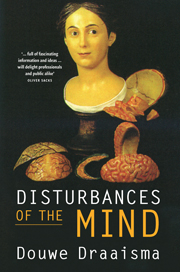Book contents
- Frontmatter
- Contents
- Introduction
- 1 Towards dusk the images appear
- 2 A tormenting round of tremors
- 3 Phineas Gage’s posthumous stroll
- 4 The Celestine prophesy
- 5 Sparks from a Leyden jar
- 6 Siberian brandy
- 7 Go to hell, idiot! Gilles de la Tourette syndrome
- 8 A labyrinth of tangles
- 9 The Mercator of neurology
- 10 The headquarters of madness
- 11 A cup of tea for the doppelgänger
- 12 Little professors
- 13 The Cardan suspension of science
- Index
- References
9 - The Mercator of neurology
Brodmann’s areas
Published online by Cambridge University Press: 05 March 2014
- Frontmatter
- Contents
- Introduction
- 1 Towards dusk the images appear
- 2 A tormenting round of tremors
- 3 Phineas Gage’s posthumous stroll
- 4 The Celestine prophesy
- 5 Sparks from a Leyden jar
- 6 Siberian brandy
- 7 Go to hell, idiot! Gilles de la Tourette syndrome
- 8 A labyrinth of tangles
- 9 The Mercator of neurology
- 10 The headquarters of madness
- 11 A cup of tea for the doppelgänger
- 12 Little professors
- 13 The Cardan suspension of science
- Index
- References
Summary
When a seventeenth-century merchant vessel sailed home from the East Indies and moored in Amsterdam harbour, no living soul was allowed to leave the ship before a sealed chest had been taken from on board. That chest was transferred, under armed guard, to the headquarters of the VOC or Dutch East India Company. Not until its contents had been verified was the ship released and the crew allowed to disembark.
The contents of the trunk consisted of the logbook, the navigational readings and, most important of all, the charts.
Charts are many things at once: power, knowledge, capital. Since they can lend to one’s own actions a decisive advantage, they are not always shared with others and have often been defended by force of arms. The prosperity of the great sea-faring nations of the sixteenth and seventeenth centuries was closely bound up with their insight into the strategic importance of charts. The high level of cartography in countries like Portugal, Italy, Spain and Holland was both condition and effect. Cartographers like Joan Blaeu and Gerard Mercator in Holland and Amerigo Vespucci in Florence actualized and perfected their atlases thanks to a commercial and military expansion to which they had contributed with their charts.
- Type
- Chapter
- Information
- Disturbances of the Mind , pp. 229 - 255Publisher: Cambridge University PressPrint publication year: 2009



